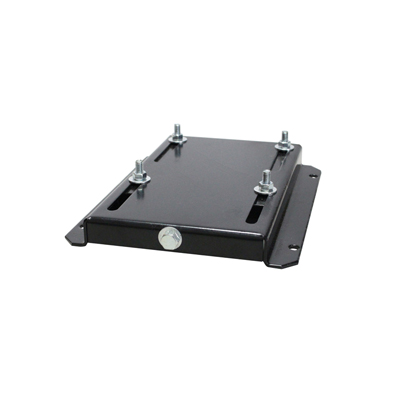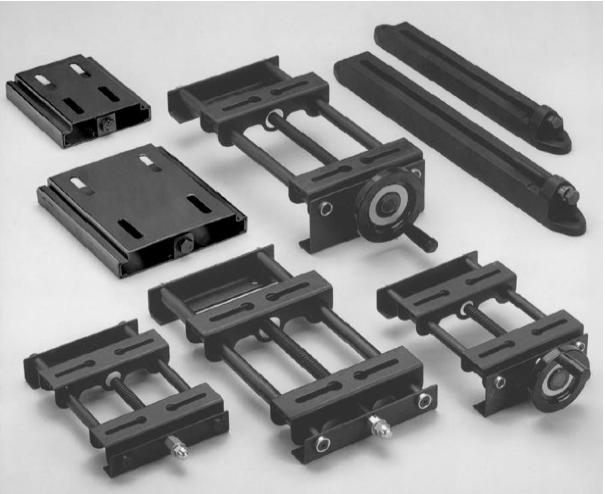Product Description
50m Hydraulic Motor Driven Crawler Based Mining Drilling Rig
I. Hydraulic Mine Drilling Rig Product Description
WD-50T is a simple rig suitable for borehole drilling in geo-construction and geo-technical exploration drilling in projects like civil building, construction of railway, hydropower, highway, bridge and dam etc. Typically, it is mainly used for:
- Soil sampling with auger drilling.
- Anchor drilling
- Micro piling.
- Geothermal drilling.
- Core drilling with conventional coring tools.
- Water well drilling by carbide and rotary drilling.
II. Hydraulic Mine Drilling Rig Main Features
This is especially usefully with hydraulic motor driven crawler chassis in the mountainous and mining pit area, suitable for almost all the terrains in mining pit and engineering working areas.
III. Hydraulic Mine Drilling RigTechnical Specification
| Model No. | WD50M | WD50T (With Crawler Chassis) |
| Drill Pipe Diameter | 42mm | 42mm |
| Drilling Hole Diameter | 75mm | 75mm |
| Drilling Depth | 50 m | 50 m |
| Kelly Bar | Dia.=50mm / L=1m | Dia.=50mm / L=1m |
| Recommend Drill Pipe Length | 0.75m | 2m |
| Drilling Angle | 90° | 90° |
| Diesel Engine Power | 5.7kW/2200rpm | 5.7kW/2200rpm |
| Dimensions of Main Machine (L x W x H) | 1400x600x1600mm (Packaged) | 2000x600x2000mm (Packaged) |
| Total Weight of Main Machine | 300KG | 800KG |
| The Heaviest Part of Machine | 70KG | 350KG |
| Spindle Rotary Speed | 285, 570r/min | 285, 570r/min |
| Spindle Stroke | 1m | 1m |
| Lifting Force | 300KG | >300KG |
| Feeding Force | 200KG | 200KG |
IV. Hydraulic Mine Drilling Rig Photos
| After-sales Service: | Available |
|---|---|
| Warranty: | 1 Year |
| Certification: | ISO 9001:2000 |
| Condition: | New |
| Motor: | DC Motor |
| Drill Hole Diameter: | <100mm |
Are motor bases compatible with different types of motor mounts and couplings?
Motor bases are designed to be compatible with different types of motor mounts and couplings. Here’s a detailed explanation:
1. Motor Mounts: Motor bases typically provide standard mounting options that are compatible with various motor mount configurations. Common motor mount types include:
- Foot Mounts: Motor bases with foot mounts have slots or holes that align with the mounting feet on the motor. These bases allow for secure attachment and proper alignment of the motor.
- Flange Mounts: Some motors have flanges instead of feet for mounting. Motor bases designed for flange-mounted motors have matching flange patterns that ensure proper alignment and secure attachment.
- Face Mounts: In certain applications, motors are mounted directly to a surface using a face mount configuration. Motor bases compatible with face mounts provide the necessary mounting features, such as bolt patterns or mounting brackets, to facilitate this type of installation.
Motor bases are typically available in different configurations to accommodate these various motor mount types. This compatibility ensures that the motor base can securely and correctly mount different motor types, allowing for flexibility and ease of installation.
2. Motor Couplings: Motor bases are not directly involved in the coupling between the motor and driven equipment. The coupling is a separate component that connects the motor shaft to the driven shaft, such as a pump or gearbox. Motor bases do not have specific compatibility requirements with motor couplings.
However, it’s important to consider the space and clearance requirements for the coupling when selecting a motor base. Motor bases should provide adequate space for the coupling and allow for proper alignment between the motor and driven equipment.
Motor bases play a vital role in supporting and aligning the motor, irrespective of the type of motor mount or coupling used. They provide a secure and stable platform for mounting the motor, ensuring proper alignment, minimizing vibrations, and supporting the overall performance of the motor.
When selecting a motor base, it’s essential to consider the motor mount type specified by the motor manufacturer and ensure compatibility with the chosen base. Additionally, considering the space requirements for the motor coupling and its alignment with the driven equipment can help determine the appropriate motor base configuration.
In summary, motor bases are designed to be compatible with different types of motor mounts, including foot mounts, flange mounts, and face mounts. They provide the necessary features and configurations to securely and properly mount the motor. Motor bases are not directly involved in motor coupling, but they should accommodate the space and alignment requirements of the coupling. Considering motor mount compatibility and coupling clearance when selecting a motor base ensures a well-integrated and efficient motor installation.
Are there energy efficiency benefits associated with certain types of motor bases?
Yes, certain types of motor bases can offer energy efficiency benefits. Here’s a detailed explanation:
1. Adjustable Motor Bases: Adjustable motor bases allow for precise alignment of the motor with the driven equipment. Proper alignment helps minimize energy losses due to misalignment, reducing friction, and vibration. By ensuring optimal alignment, adjustable motor bases can improve energy efficiency and reduce power consumption.
2. Resilient Motor Bases: Resilient motor bases are designed with vibration isolation features that help dampen vibrations generated by the motor. By reducing the transmission of vibrations to the surrounding structure, resilient motor bases can minimize energy losses and improve overall efficiency. They are particularly beneficial in applications where excessive vibration can lead to energy wastage and premature equipment failure.
3. Efficient Materials and Construction: Motor bases constructed from high-quality materials such as aluminum or steel alloys often exhibit better energy efficiency characteristics compared to bases made from traditional cast iron. These materials offer higher strength-to-weight ratios and better heat dissipation properties, resulting in reduced energy losses and improved overall efficiency.
4. Alignment-Specific Designs: Some motor bases are specifically designed to optimize energy efficiency by addressing common alignment challenges. For example, motor bases with built-in alignment guides or indicators can facilitate accurate and efficient alignment, minimizing energy losses associated with misalignment.
5. Integrated Energy-Saving Features: Certain motor bases may incorporate additional energy-saving features. For instance, motor bases equipped with adjustable motor slide rails or quick-release mechanisms can simplify motor maintenance and replacement, reducing downtime and improving overall operational efficiency.
6. Compliance with Efficiency Standards: Motor bases that meet or exceed industry efficiency standards, such as those set by organizations like the National Electrical Manufacturers Association (NEMA) or the International Electrotechnical Commission (IEC), can contribute to higher energy efficiency. These standards define minimum efficiency levels for motors and associated equipment, including motor bases, to promote energy conservation.
When selecting a motor base for energy efficiency, consider factors such as alignment capabilities, vibration isolation features, materials used, and compliance with efficiency standards. Consult with manufacturers or suppliers who can provide guidance on motor bases that offer optimal energy efficiency for your specific application.
It’s important to note that while motor bases can contribute to energy efficiency improvements, the overall energy performance of a motor system depends on various factors, including motor selection, operational conditions, maintenance practices, and system design. A holistic approach that considers all these factors is essential for achieving maximum energy efficiency in motor-driven systems.
Are there different types of motor bases available for various motor sizes?
Yes, there are different types of motor bases available to accommodate various motor sizes in industrial applications. Here’s a detailed explanation:
Motor bases are designed to provide a secure and stable mounting platform for electric motors. Since motors come in different sizes and configurations, motor bases are available in various types to accommodate these variations. Here are some common types of motor bases:
1. Adjustable Motor Bases: These motor bases feature adjustable mounting slots or bolt patterns that allow for flexibility in positioning the motor. They are designed to accommodate a range of motor sizes within a specified range, making them versatile for different motor sizes. Adjustable motor bases are convenient when the motor size may vary or change over time.
2. Fixed Motor Bases: Fixed motor bases, also known as rigid motor bases, are designed for specific motor sizes. They have pre-drilled holes or specific mounting patterns that match the dimensions of a particular motor size. These bases provide a precise fit and ensure stable mounting for the designated motor size.
3. Slide Bases: Slide bases, also called sliding motor bases or motor slide rails, are used when motor adjustment or repositioning is necessary. They allow for horizontal movement or sliding of the motor to adjust the belt tension or align pulleys. Slide bases are commonly used in belt-driven systems where proper alignment and tensioning are critical.
4. Spring-Isolated Motor Bases: Spring-isolated motor bases are designed to minimize vibrations and dampen shock transmission from the motor to the supporting structure. These bases incorporate springs or elastomeric elements that isolate the motor from the mounting surface, reducing the potential impact of vibrations on the surrounding equipment or structure. Spring-isolated motor bases are commonly used in applications where vibration control is crucial, such as in sensitive electronic or precision machinery.
5. Custom Motor Bases: In certain cases, custom motor bases may be required to meet specific installation requirements or environmental conditions. Custom motor bases can be designed and fabricated to accommodate unique motor sizes, shapes, or mounting configurations. These bases are tailored to the specific needs of the application, ensuring proper fit and functionality.
Motor bases are typically made of sturdy materials like steel or cast iron to provide strength and durability. When selecting a motor base, it’s important to consider the motor size, weight, mounting requirements, and the specific needs of the application.
In summary, there are different types of motor bases available to accommodate various motor sizes. Adjustable motor bases, fixed motor bases, slide bases, spring-isolated motor bases, and custom motor bases offer different features and benefits depending on the specific motor size and installation requirements.
editor by CX 2023-12-12




